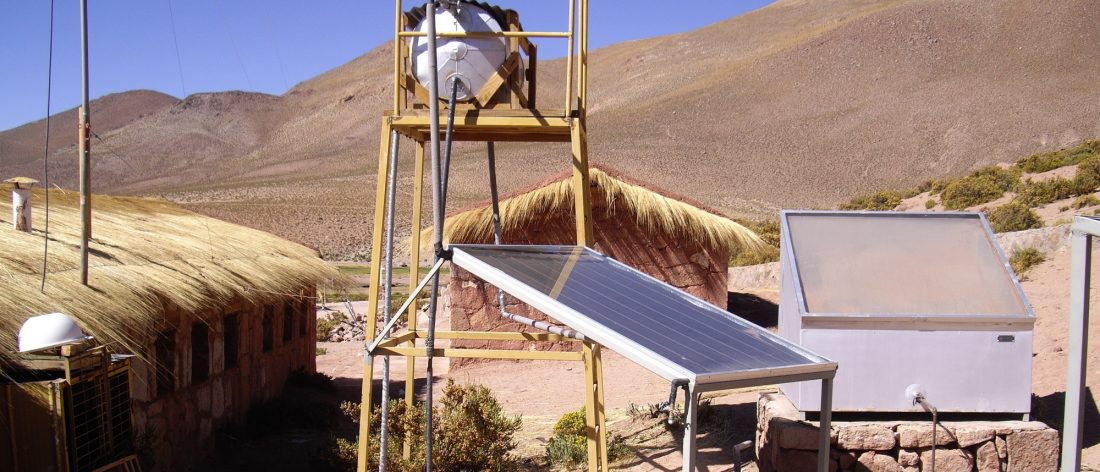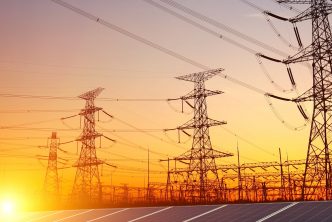Local Money for Local Problems
The need to migrate from foreign funding to scale the off-grid sector to local funding cannot be overemphasized. However, these prospective local financiers will require more assurances and understanding of these off-grid industries business models.
By Olu, Aruike Olu
Introduction
Nigeria’s electricity issues have been better documented over the last few years than at any other time. With over 100 million people living across off-grid locations, the need to ensure rapid energy access expansion is clear. Access to energy will ensure that off-grid locations'(critical for Nigeria’s food security sustainable) true economic potential will be unlocked. For such rapid expansion to occur, the regulatory environment should ensure availability of funds and the development of requisite local expertise. There are many opinions about the effectiveness of the National Electricity Regulatory Commission (NERC) Mini-Grid Regulations (2016), which leverages various key power sector regulations and policies. While the local expertise gap can be plugged through training and education of the large workforce, the financing gap is not as straightforward to bridge. Infrastructure projects in general and power projects more specifically, require significant long-term financing.
Foreign Financing in the last few years
According to the Rural Electrification Agency (REA), in the last few years development institutions like the World Bank, International Finance Corporation (IFC) and the African Development Bank have provided Nigeria over $500 million in grants to improve energy access and scale the off-grid sector. Other financing options have also becoming available as the regulatory environment has also become clearer. Independent foreign agencies and social investment vehicles including United States Trade and Development Agency (USTDA), United States African Development Foundation (USADF), Shell Foundation and Deutsche Gesellschaft für Internationale Zusammenarbeit GmbH (GIZ), continue to provide grants and concessionary financing for developers, to execute projects across the value chain.
Other financing sources have included equity and debt financing from crowdfunding sources such as Bettervest, Kiva and Trine. In 2019 alone, developers like Daystar Power, Arnergy and Rensource all raised equity financing from foreign sources at different times. Quite notably, these companies have business models focused largely at commercial and industrial solutions. For such solutions, the ability to pay depends on the use of power supplied to drive commercial activities and generate income, unlike totally off-grid solutions where much remains unproven. The impact investor, ‘All On’, seeded by Shell, also continues to invest alongside foreign financiers such as Breakthrough Energy Ventures, NORFUND etc., albeit largely in foreign currency. Other locally associated funders such as Persistent Energy and Verod Capital have also provided foreign-currency investments to companies within the off-grid sector. In 2020, Nigerian owned Alitheia Capital, an investment partner for Dutch Goodwell Investments, was also a co-investor in SparkMeter, an American based metering solutions provider, again, in foreign currency.
Local Financing for The Off-Grid Sector
So, what has happened with local financing to the sector, one may ask. Not enough has been done in terms of local financing for the off-grid sector. However, since 2015, government-owned development finance institution Bank of Industry (BOI) has championed the provision of local financing at concessionary rates to developers to deploy mini-grids and other off-grid solutions. The Rural Electrification Fund had also earmarked about NGN1 billion raised from various sources to finance off-grid solutions and has successfully funded operational mini-grid deployments across the country. Local commercial funding has, however, remained minimal or non-existent. In contrast, the Rural Electrification Agency has continued to increase local financing options for developers with its recently launched 5 Million Solar Connections Interventions Facility. All On has also continued to actively lead local financing efforts in local currency as it has done with similar efforts with global finance partners.
Increasing Local Funding for the Off-Grid Sector
Most local financings have largely remained interventionist in nature. They are just enough to ensure that players within the sector continue to operate but not sufficient to enable them to scale rapidly enough. As the off-grid sector continues to grow, such interventionist programs may no longer be viable and local commercial financing will need to finance sector growth to the next level. Even though cost reduction has become quite evident as technologies continue to improve over time, off-grid projects still require long-term cheap financing to be profitable. For local commercial financiers, the reluctance or inability to finance long tenures as required is due to risk averseness, and a misunderstanding of the business model. In Nigeria’s case, a case of ‘once bitten, twice shy’ may even be at play, given that most have not recovered fully from participating in funding the privatisation process between 2003 and 2013. Admittedly, the off-grid sector remains in its infancy as developers and providers are still figuring out business models. Nigeria’s double-digit inflation rates also mean that local commercial financing rates will effectively remain high and unable to compete with foreign options. However, there are a lot of purposes which local financing can serve within the off-grid sector. For instance, local sources can finance costs such as local labour, civil works, local transportation of components, and any other form of localised costs. Such local finance could ensure a reduction of the currency risk and mismatch issues for project developers with such financing being de-risked using a blended finance model infused with grants and foreign single-digit rate financing options.
Funding a portfolio of projects to be commissioned within a similar timeline ensures a cash flow source that will be highly uninterruptible for possible repayments. This approach is much better than financing a single project which may have teething problems or any other technical problem and affect cash flow at any time. Multiple projects mitigate this, as the probability of similar issues across the board at the same time or period is considerably low.
In the same vein, local commercial financing and demand stimulation efforts can be financed through microfinance institutions, as these usually have a short-term financing outlook. The benefits of financing such efforts are widespread. It enables users to generate more income to improve their lifestyles, purchase power from the developer, and make repayments to the financier when they fall due. De-risking such investments are also relatively straightforward as long as there are considerations for local conditions when providing such financing.
Another possible source of low-risk financing could be providing medium-term financing to MSMEs to provide solar installations and reliable power to help drive business growth. Such financing can be factored into already existing debt facilities, ensuring client retention for the financier and further de-risking through appropriate regulation and relevant government support.
Conclusion
Currently, most private off-grid projects require long-term funding (10 to 15 years) with a low cost of capital to be feasible. In developing countries, including Nigeria, local commercial financiers are often reluctant or unable to offer long-term loans. Their reluctance is usually due to the lack of knowledge of the business models or they cannot bear losses due to high or uncertain inflation. In many emerging economies, interest rates for commercial loans may exceed 15 percent (and are always mostly double-digit rate financing) requiring high collateral. As the Nigeria off grid power market is still budding, returns vary wildly, and business models still have to be proven. However, while more development finance institutions like BOI should continue to provide local currency concessionary funding, local commercial financing should also be increased gradually to match sector growth. Financiers can also explore various options to ensure investments are de-risked and sustainable. That way, the industry can develop a sustainable ecosystem to create solutions and tackle Nigeria’s age-long energy access deficit.
Olu, Aruike Olu is a chemical engineer and an energy expert who is passionate about the power sector. He holds master’s degrees in Gas Engineering and Management and Business administration. He has also attended courses at Oxford.







